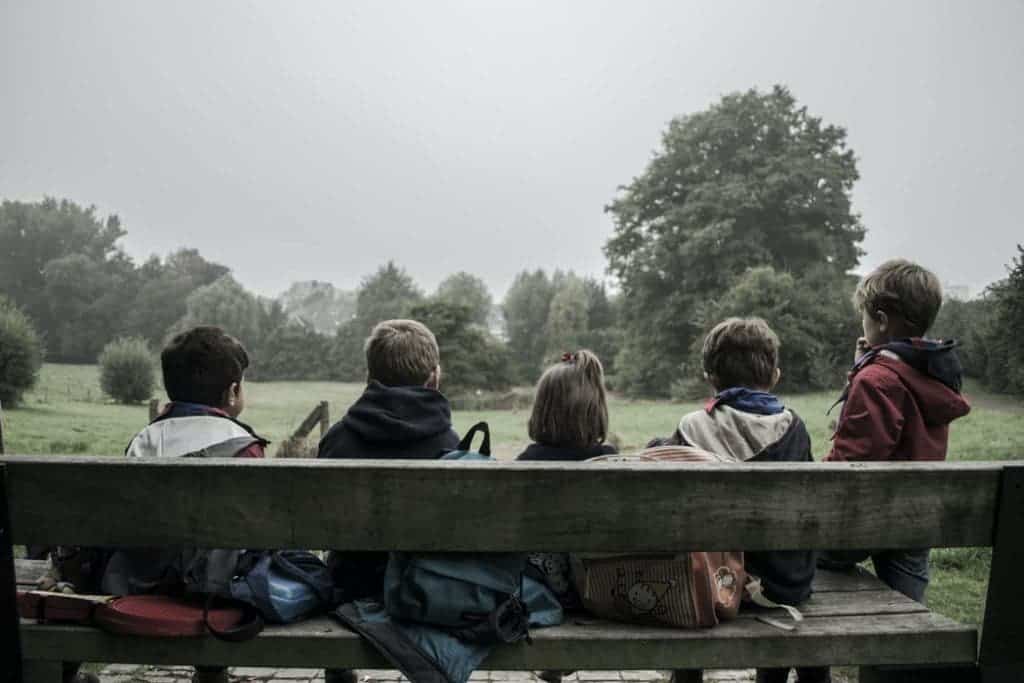Ask almost anyone on the globe and they’ll tell you that the past year and a half has been less than ideal. The isolation, the uncertainty, and the time spent without the usual routines have been challenging and took a toll on all of us. Kids have been hit especially hard during the pandemic, and the mental health issues that they are faced with are too often left out of the spotlight.

There are 2.2 billion people under 18 in the world, around 28% of the world’s population. Teenagers (10-year-olds to 19-year-olds) make up 16% of the world’s population. With social distancing and school closures, isolation has become a major component of our day-to-day life. As necessary as the response was for dealing with the COVID-19 pandemic, it has come at a high cost.
While school-age children may have experienced short closures in the past, the amount of time many schools closed their doors during 2020 and into 2021 was unprecedented for them. The resulting lack of regular routine and social interaction can help explain why many are experiencing, or have experienced, increased stress, anxiety, and feelings of helplessness.
The impact of the pandemic, lockdowns, and school closures on children will depend on a range of factors:
- Educational status;
- Developmental age;
- Whether they have special needs;
- Economic security (or lack thereof);
- If they’ve had a parent quarantined due to exposure or illness.
If you’re worried about the impacts of the COVID-19 pandemic on your children’s mental health, a good first step is to speak to a doctor, and potentially get a referral for a mental health practitioner. Even if your child isn’t showing any clear signs of distress, it’s better to ensure that everything is alright.
If you don’t have a primary doctor, a good first step is to find a family medicine physician to be prepared if and when you need to contact someone.
Research findings on the pandemic’s impact
The following are some of the results of studies that have looked at the impact of the pandemic on children.
Research on loneliness has a bearing on the situation. A review of 63 studies with more than 50,000 participants found that loneliness and social isolation increased the risk of depression up to nine years later. That research suggested that duration, rather than intensity, was the most important issue, which means that the fallout of school closures and social distancing could be marked. So keep in mind, any effects the pandemic has had on children is unlikely to simply go away — it may be a problem for years to come.
More directly related to the pandemic, there have been several studies that demonstrated a big impact. One recent questionnaire administered in China to over 3500 children and adolescents measured depression, anxiety, and coping style. Over 22% of respondents were depressed, higher than the estimated 13.2% that would have been expected in the country.
Anxiety was also higher than previously reported, especially among those who had a friend or family member who had contracted a case of COVID-19. Among coping styles, those with a “problem-focused” coping style fared better when it came to depression, while those with an “emotion-focused” style had a higher level of depressive symptoms.
A study in Italy and Spain looked at the emotional impact of the pandemic, with a focus on parents. This study asked parents of children from the ages of three to 18 to compare how their children were now, to how they were before being confined at home. 85.7% of parents reported a change in the behaviors and emotions of their children. The most frequent included:
- Problems with concentration;
- Boredom;
- Becoming irritable;
- Feelings of restlessness;
- Nervousness;
- Uneasiness;
- Loneliness;
- Worries.
Among parents, 75% reported feeling stressed about the situation in quarantine. That parental stress was associated with an increase in reports of emotional and behavioral changes in children. It is possible that some of this is also spilling to the children.
Another survey in China of more than 8000 middle and high school students asked participants to describe their anxiety and depressive symptoms during the pandemic. Depressive symptoms were reported in 43.7% of respondents, while 37.4% reported anxiety. There was an overlap of 31.3% reporting both.
Final thoughts
Research has demonstrated that COVID-19 has, and is, affecting children’s and adolescent’s mental health. Depression and anxiety are rising, and while additional research is required to understand the longer-term impacts, it’s not wrong to be concerned.
If you’re a parent, you should think about this when you’re discussing your children’s health with their doctors. A good clinician will be keeping an eye out, and may already be asking you and your child questions about how the pandemic has impacted them. For some, it could mark the onset of problems, or it could make existing mental health issues worse. For young people with depression and anxiety, being at home may actually help things temporarily, but it’s not a long-term solution, so be prepared to work with a clinician on how they can best adjust when returning to school.






